Technology Eligibility
Incentives shall be awarded depending on the number of eligible Level 2 connectors installed at a project site. Level 2 EVSEs must meet a specific set of criteria to be considered eligible. The requirements set forth by the California Energy Commission are summarized below. For a full description of eligibility requirements, consult the Implementation Manual. If you are a manufacturer and are interested in your charger becoming eligible, contact the Project Team.
All eligible equipment must:
- Be new and installed for the first time
- Be certified by a Nationally Recognized Testing Laboratory Program (NRTL) and certified to UL 2954 standard
- Be rated at 6.2kW or greater
- Be Energy Star certified
- Be compliant with SAE J1772 technical standard
- Be Division of Measurement Standards (DMS) pursuant to the California Type Evaluation Program (CTEP) or National Type Evaluation Program (NTEP) as applicable.
- Be networked and support, at a minimum:
- Network connectivity such as 4G LTE, IEEE 802.3 for Ethernet, or IEEE 802.11n for high bandwidth wireless networking
- Ability to receive remote software updates, real-time protocol translation, encryption and decryption, Internet Protocol (IP)-based processor capable of supporting multiple protocols, and compliant with Transmission Control Protocol (TCP)/IP and IPv6
- Ability to connect to a network’s back-end software
- Be ISO-15118 “Hardware ready” through self-attestation on their manufacturer specification sheet and:
- Powerline communication based digital communication as specified in ISO 15118-3;
- Secure management and storage of keys and certificates using a hardware security module (HSM), trusted platform module, SoftHSM, or similar technology;
- Transport layer security (TLS) version 1.2; support for TLS 1.3 is recommended to support cryptographic requirements in ISO 15118-20;
- Remotely receiving updates to activate or enable ISO 15118 use cases; support for cryptographic agility is recommended to replace broken ciphers;
- Connecting to a charging station management system, for example using Open Charge Point Protocol (OCPP):
- Selecting the appropriate communication protocol requested by the EV.
- Contain OCPP 1.6 or later Core (Subset) & Security certifications, * or OCPP 2.0.1 certification proof of payment, or OCPP 2.0.1 test tool report showing compliance for Core & Security.
- Be Open Charge Alliance (OCA) certified to one of the following (For more information on certification through OCA, visit the Open Charge Alliance Website):
- Be OCPP v1.6 certification proof of payment; or
- Show OCPP v2.0.1 certification proof of payment; or
- Show OCPP v2.0.1 test tool report showing compliance for Core & Security.
- Be Open Charge Alliance (OCA) certified to one of the following (For more information on certification through OCA, visit the Open Charge Alliance Website):
Technology eligibility that shall be required in the future is as follows (and may be subject to change):
| Requirement | Technology | Date |
|---|---|---|
| OCPP 2.0.1 Core & Security certification* | L2 | January 1, 2025 |
Requirement
OCPP 1.6 or later Core (Subset) & Security certifications, * or OCPP 2.0.1 certification proof of payment, or OCPP 2.0.1 test tool report showing compliance for Core & Security
Technology
L2
Date
January 1, 2024
Requirement
OCPP 2.0.1 Core & Security certification*
Technology
L2
Date
January 1, 2025
Requirement
ISO 15118 Hardware Ready
Technology
L2
Date
July 1, 2024
* EVSE models must be certified to be eligible for block grant funding. There are no current requirements for certification of software used by the charging station management system. ^ Manufacturers which enroll OCPP 1.6 certified equipment on or before January 1, 2024, may request an extended July 1, 2025, certification deadline for OCPP 2.0.1
Network Providers
Projects funded by Communities in Charge must maintain a network service agreement for their Level 2 EVSEs receiving incentives, and maintain this agreement for a period of no less than 2 years (24 months) from the date of final commissioning.
Network Providers must implement a mechanism to transfer the required data to CALSTART with a format and frequency that is acceptable to CALSTART and CEC.
The data fields collected should include, at a minimum:
- EVSE ID
- Port ID
- Port maximum kW
- Connection start/end date
- Connection start/end time
- Charge session start/end date
- Charge session start/end time
- Energy consumed
- Interval ID
- Interval peak demand
- Interval start/end date
- Interval start/end time
- Interval energy consumed
- Interval average demand
- Idle duration
- Downtime reason
- Event start/end date
- Event start/end time
Pending reliability legislation may change or alter some of these parameters. All stakeholders are recommended to keep up to date with any rules or regulations which may impact their project site.
Want to Be An Eligible Technology or Network Provider?
Level 2 EVSE Manufacturers – If you or an applicant are interested in a particular EVSE becoming eligible for incentives, contact the Project Team for more details.
Network Providers – If you have questions regarding data collection, contact the Project Team for more details.
Should the equipment selected be deemed approved and qualified, Communities in Charge will update the Eligible Equipment List accordingly.






